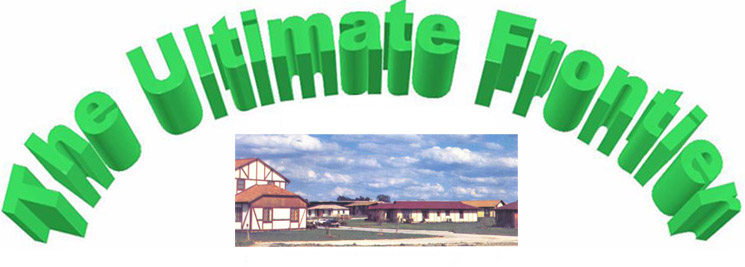|
|
||
|
|
THE STELLE LEARNING CENTER A NEW BRAND OF “SCHOOL” Last March, the parents, teachers, and administrators of
the The Stelle Early Learning (pre-school
age) educational program had decided to adopt the Montessori Method for our
youngest children and it was felt that perhaps we
could find and adopt a system for our elementary and secondary students. We
formed a Task Force to investigate a variety of educational systems and
theories. The object was to find one system to satisfy our high goals of
education at Stelle. The Task Force was comprised of eight
people who had varying backgrounds of interest and experience in education.
We met two or three times each week to compile and discuss every type of
theory and school system which we could find. In addition to these meetings. We traveled to We found all the systems working
admirably where they had been instituted. Each
system had techniques and ideas from which our school could benefit. However,
we did not feel that the transplanting of any of these as a whole would be
appropriate to our situation in Stelle. A major concern arose early about the
need for a balanced education and the enrichment of the student in a wide
variety of fields. Attendant to this concern was the question of how to make
the sciences appeal to the artistically inclined child, or art and music of
interest to the student of mathematics. The challenge was one of instituting a
program where fields of study would be distinct yet still be
treated with an interdisciplinary approach that would demonstrate how
the different subjects are related in real life experience. The new teachers
met several times with the Task Force in order to exchange ideas and get the
full thrust of the Task Force’s research and intentions. It was obvious that
a totally interdisciplinary approach was beyond our
present capabilities. However, we wanted to communicate the interrelationship
of all knowledge in order to make each subject more meaningful. We adopted a schedule
which would lend itself to achieving this approach. The yearly
schedule was divided into six terms of seven weeks,
the vacations falling at the spiritual holidays and at the change of seasons.
During each term, five major subjects would be scheduled.
The arts were included as a major subject and not relegated to a subordinate
position as so often is done. During each term, one of the subjects would be chosen as the emphasized subject. The other
subjects would be taught in relation to the subject
being emphasized. In addition to being a school, the rote of our facility
expanded to become a resource center where we could utilize the skills of the
community at large to enrich the educational process. The first term is nearly over and we now
have the opportunity to evaluate the success of our plans and dreams. One
teacher has been working with the elementary level students, ages 6-11. His
emphasis subject for the term has been geography. As a vehicle for teaching
many different subjects, Steve has been using the technique of a hypothetical
journey from Stelle to the Attention is given
to the spiritual development of our children. They begin each school day with
a period of meditation and discuss how the Virtues and other points of Stelle
philosophy apply to them and each other. Drawing, dance, and playing musical
instruments are ways we use to enrich the children’s background in the arts.
The children are working with the recorder and Steve occasionally plays the
guitar for them in music listening sessions. Drawing, craft projects, and dance
lessons are part of the curriculum. Each day includes exercises in memory and
awareness. Tim teaches the secondary level, ages 12-18.
His emphasis is on the sciences. At the secondary level
the sciences and mathematics are readily joined. Students learn the basic
facts of algebra and chemical reactions. Then they work on the practical
application of facts, the subjects become both interrelated and of practical
use for our students. Classes in English deal with vocabulary
and grammar but find a practical outlet in the creation of a school newspaper
to report activities in Stelle. This has the added benefit of keeping the
students more aware of what is happening in the community. Logic and memory
techniques are taught through the game of chess. As
in the elementary classes, the arts are treated as a major subject and the
practical arts are also stressed. The girls are
becoming involved with dancing and cooking. The boys study drafting and have
practical experience in the industries of Stelle. Throughout the educational
program our philosophy, which teaches the unity and interrelatedness of
knowledge and balance between spiritual, mental, and emotional character,
remains as a central focus. We encourage our students to become as loving and
caring as possible. Our hope is to guide them in developing a strong sense of
personal worth and motivating them to the desirability of personal growth.
Logic, memory, and awareness are not taught simply
as experiments to gratify the curiosity of the teachers. They are pursued out
of a recognition that these are essential qualities
of the Ego’s Mind which facilitate moving through life. An interdisciplinary
approach has been adopted in order to give the
students the feeling that the universe is ordered by a conscious, loving
intellect. All things yield to understanding if sufficient mental and
emotional energy is expended toward that end. The research and plans completed this
spring and summer are taking shape as realities within our learning center.
The enthusiasm and ability of the people involved has made it an exciting and
rewarding program. Our uncertainties at taking on something new and different
are being replaced by a different attitude. Now
there is a confidence that we are involved in something that is good and can be made better as we improve ourselves. |
|
|
|
|
|
